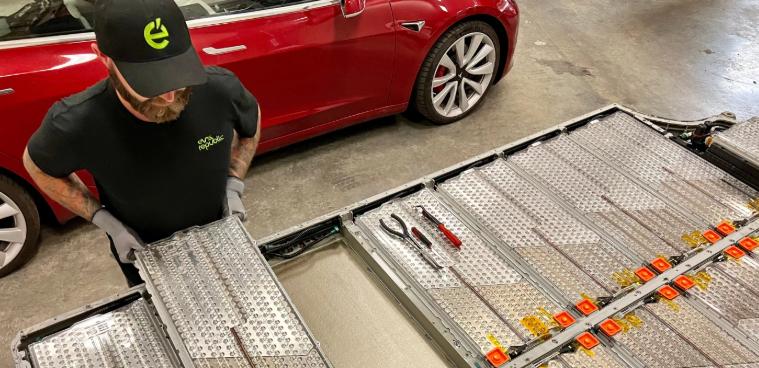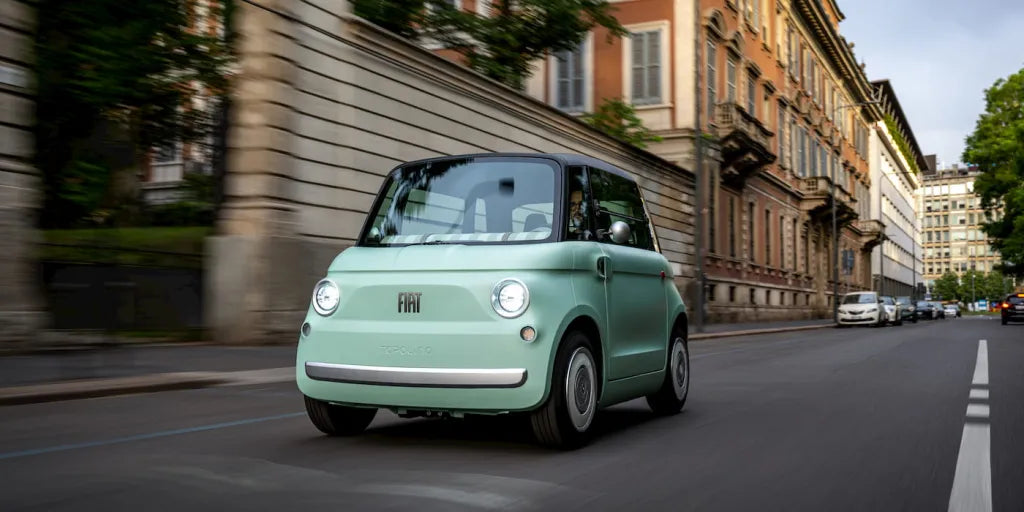Alors que les véhicules électriques (VE) gagnent en popularité, l'entretien à long terme, et notamment le remplacement de la batterie , sont au cœur des préoccupations de nombreux propriétaires de Tesla, actuels et futurs. La batterie est le composant le plus coûteux d'une voiture électrique, et Tesla, réputée pour sa technologie de pointe, ne fait pas exception. En 2025, alors que de plus en plus de modèles Tesla vieillissent au-delà de leur période de garantie, la question devient de plus en plus pertinente : quel est le coût actuel du remplacement d'une batterie Tesla et quels facteurs influencent ce coût ?
Cet article fournit une analyse complète des coûts de remplacement de la batterie Tesla, de la couverture de la garantie, des données réelles, des variables de coût contributives et des conseils pour les propriétaires actuels et futurs de Tesla.
1. Coûts de remplacement des batteries Tesla par modèle (estimations 2025)
Le coût de remplacement d'une batterie varie considérablement selon le modèle Tesla, sa taille et le type de remplacement (bloc complet ou module). Voici les coûts estimés pour 2025 pour un remplacement hors garantie :
| Modèle Tesla | Coût de remplacement estimé (USD) | Taille de la batterie (kWh) | Coût approximatif de la main-d'œuvre |
|---|---|---|---|
| Modèle 3 Gamme Standard | 12 000 $ à 14 000 $ | ~55 kWh | 2 000 $ à 2 500 $ |
| Modèle 3 longue portée | 14 000 $ à 16 000 $ | ~75–82 kWh | 2 000 $ à 2 500 $ |
| Modèle Y longue portée | 14 000 $ à 16 500 $ | ~75–82 kWh | 2 000 $ à 2 500 $ |
| Modèle S (avant 2022) | 18 000 $ à 22 000 $ | ~85–100 kWh | 3 000 $ et plus |
| Modèle S (2022+) | 20 000 $ à 24 000 $ | ~100 kWh (nouvelles cellules) | 3 000 $ et plus |
| Modèle X (toutes les années) | 20 000 $ à 25 000 $ | ~90–100 kWh | 3 000 à 4 000 $ |
| Cybertruck (Est.) | 20 000 $ à 25 000 $ (estimation initiale) | 123–130+ kWh | 3 000 à 5 000 $ |
Remarque : Les prix incluent la batterie et la main-d'œuvre. Les prix peuvent varier selon la région, la disponibilité et les prestataires de services tiers.

2. Qu'est-ce qui est réellement remplacé ?
Les véhicules Tesla sont équipés de packs de batteries modulaires, généralement composés de plusieurs modules. En cas de problème de batterie, Tesla ne remplace pas toujours l'intégralité du pack ; parfois, seuls un ou deux modules doivent être remplacés.
Types de réparations de batteries :
-
Remplacement du module : 3 000 à 7 000 $ par module selon le modèle et la main-d’œuvre.
-
Remplacement complet du pack : remplacement complet de l'ensemble du système de batterie.
-
Réparations du système de gestion de batterie (BMS) : si le problème est lié au logiciel, les coûts de réparation peuvent être considérablement inférieurs, parfois inférieurs à 1 000 $.
Par conséquent, tous les « remplacements de batterie » ne sont pas aussi coûteux : un diagnostic est essentiel avant d’envisager les pires scénarios.
3. Quels sont les facteurs qui influencent le coût de remplacement de la batterie Tesla ?
1. Chimie et taille de la batterie
Les batteries plus récentes, comme les cellules 4680 de Tesla, sont plus denses en énergie et plus efficaces, mais aussi plus complexes et plus coûteuses à remplacer. Les batteries plus grandes (modèles S/X) coûtent naturellement plus cher en raison de leur taille.
2. Coûts de main-d'œuvre
Le remplacement d'une batterie est une opération fastidieuse. Les techniciens doivent retirer le bloc-batterie en toute sécurité, ce qui nécessite souvent de soulever le véhicule et de le débrancher des réseaux haute tension. Les tarifs de main-d'œuvre dans les centres de service Tesla varient généralement entre 175 et 210 $ de l'heure.
3. Localisation et centre de service
Les prix peuvent varier en fonction de la situation géographique, des tarifs de main-d'œuvre locaux et de la proximité des centres de service agréés. Les zones rurales peuvent être confrontées à des coûts de transport plus élevés ou à un accès limité au service.
4. Disponibilité des options remises à neuf ou tierces
Certains spécialistes indépendants en véhicules électriques proposent des batteries Tesla reconditionnées à un prix inférieur de 20 à 40 % au prix catalogue de Tesla. Cependant, le recours à des services tiers peut annuler la garantie ou restreindre les fonctionnalités du logiciel.
4. Couverture de la garantie de la batterie Tesla
Avant d'envisager le remplacement de la batterie, il est essentiel de vérifier la couverture de la garantie. Depuis 2025, Tesla propose les garanties suivantes pour la batterie et le groupe motopropulseur :
| Modèle | Durée de la garantie | Seuil de rétention minimum |
|---|---|---|
| Modèle 3/Y Standard | 8 ans / 100 000 milles | 70 % de capacité de la batterie |
| Modèle 3/Y longue portée | 8 ans / 120 000 milles | 70 % de capacité de la batterie |
| Modèle S/X | 8 ans / 150 000 milles | 70 % de capacité de la batterie |
| Cybertruck (Est.) | 8 ans / 150 000 milles | À déterminer |
Si votre batterie tombe en panne ou tombe en dessous de 70 % de sa capacité pendant la période de garantie, Tesla la réparera ou la remplacera gratuitement. Cependant, des problèmes tels qu'un accident, une infiltration d'eau due à des modifications après-vente ou une altération peuvent annuler la couverture.
5. Dégradation de la batterie : quand le remplacement est-il réellement nécessaire ?
Contrairement aux craintes, la plupart des batteries Tesla conservent 80 à 90 % de leur capacité initiale, même après 240 000 à 320 000 kilomètres. Les données de dégradation en conditions réelles, issues de services comme Tesla et de flottes de location de véhicules électriques, montrent :
-
Modèle S (2015-2017) : dégradation d'environ 10 à 15 % après 200 000 miles
-
Modèle 3 (2018+) : dégradation d'environ 7 à 10 % après 100 000 miles
-
Modèle Y (2020+) : les premières données suggèrent une rétention similaire à celle du modèle 3
Dans la plupart des cas, les batteries Tesla ne sont pas remplacées en raison d'une perte de capacité, mais plutôt en raison de :
-
Systèmes de gestion de batterie défectueux
-
Déséquilibres de tension
-
Panne du système de refroidissement
-
Connecteur de charge endommagé
Des diagnostics de routine peuvent aider à identifier ces problèmes à un stade précoce et à éviter un remplacement complet.
6. Comment prolonger la durée de vie de la batterie de votre Tesla
Remplacer une batterie est coûteux ; l'entretien préventif est donc essentiel. Suivez ces bonnes pratiques pour prolonger la durée de vie de votre batterie :
Conseils de chargement
-
Évitez de maintenir régulièrement votre batterie à 100 % ou en dessous de 10 %
-
Utilisez la charge de niveau 2 (CA) pour une utilisation quotidienne ; réservez la Supercharge (CC) pour les déplacements
-
Activer la charge programmée pour maintenir la batterie dans une plage de température optimale
Comportement de conduite
-
Minimiser les accélérations et les freinages agressifs
-
Évitez de conduire à grande vitesse de manière soutenue par des températures extrêmes
Stockage
-
En cas de stockage à long terme, maintenez la charge entre 50 et 70 %
-
Garez-vous à l'ombre ou utilisez la climatisation pour éviter la dégradation thermique
Le logiciel de Tesla comprend le préconditionnement de la batterie, la gestion thermique et le suivi de l'utilisation, qui contribuent tous à prolonger la durée de vie du pack lorsqu'il est utilisé correctement.
7. Alternatives au remplacement complet de la batterie
Pour les propriétaires de Tesla hors garantie confrontés à des coûts de remplacement élevés, voici des alternatives pratiques :
1. Packs de batteries remis à neuf
Des entreprises comme Recell EV, Gruber Motors et Electrified Garage proposent des packs de batteries Tesla d'occasion ou remis à neuf certifiés, souvent avec des garanties limitées et des coûts inférieurs.
2. Échanger ou vendre
Parfois, reprendre un véhicule dont la batterie se dégrade est plus avantageux financièrement que de le remplacer. Tesla et les plateformes de véhicules électriques d'occasion comme Recurrent proposent des outils d'évaluation de l'état de la batterie pour évaluer la valeur de revente.
3. Achetez une garantie prolongée (tant que vous êtes éligible)
Avant l’expiration de votre garantie de batterie de 8 ans, envisagez une garantie EV étendue par un tiers qui inclut la couverture de la batterie.
Conclusion : le remplacement de la batterie est-il un facteur décisif ?
Bien que le coût de remplacement d'une batterie Tesla puisse être élevé, la bonne nouvelle est que la plupart des propriétaires de Tesla n'en auront pas besoin. Les batteries sont conçues pour durer bien au-delà de 320 000 km et la garantie les protège contre les pannes prématurées. Lorsqu'un remplacement est nécessaire, les coûts varient considérablement selon le modèle, la gravité du problème et le prestataire choisi.
À l'avenir, les innovations continues de Tesla en matière de conception de batteries, comme les packs structurels et les cellules 4680, promettent des coûts réduits à long terme et une meilleure facilité d'entretien. Cependant, pour les propriétaires soucieux de leur budget, une maintenance proactive et des habitudes de charge intelligentes restent les outils les plus efficaces pour retarder, voire éviter, le remplacement de la batterie.
Auteur : Lay Wen







Partager:
Qu'est-ce qu'une unité de contrôle de charge de véhicule (VCCU) ?
Comment la charge intelligente et la maintenance proactive peuvent prolonger la durée de vie des batteries des véhicules électriques
3 commentaires
Vos estimations sont dépassées le prix a chuter depuis 2022, e çà ne cessera de baisser , en 2024 TESLA a réussi a descendre sous les 100$ le kwh pour e pack batteries complets sortit de production (car le prix sous 100$ le kwh au niveau des cellules a été franchit lui en debut 2023) , donc pour une batterie neuve complete en sortit d usine TESLA (modeles cellules panasonic) et hors frais de port , çà côute a Tesla 7500$ max pour une 75kwh NMC ou NCA, moins cher en lg LFP vers 7200$ les 75kwh ! Après y a biensur e transport et la marge mais , on est plus a des prix a 5 chiffres pour une batteries de moins de 100kwh (pour decembre 2025) , l objectif 2026/2027 est d atteindre 80$ par kwh du pack batterie complet sortit d usine
I have a 2018 Tesla model 3 so my warranty is up in 2026. Will Tesla be upgrading their batteries to some of the more recent technologies such as sodium ion in the near future?
Clear breakdown of Tesla battery replacement costs very informative, practical, and future-focused. This guide helps owners plan smarter for 2025.